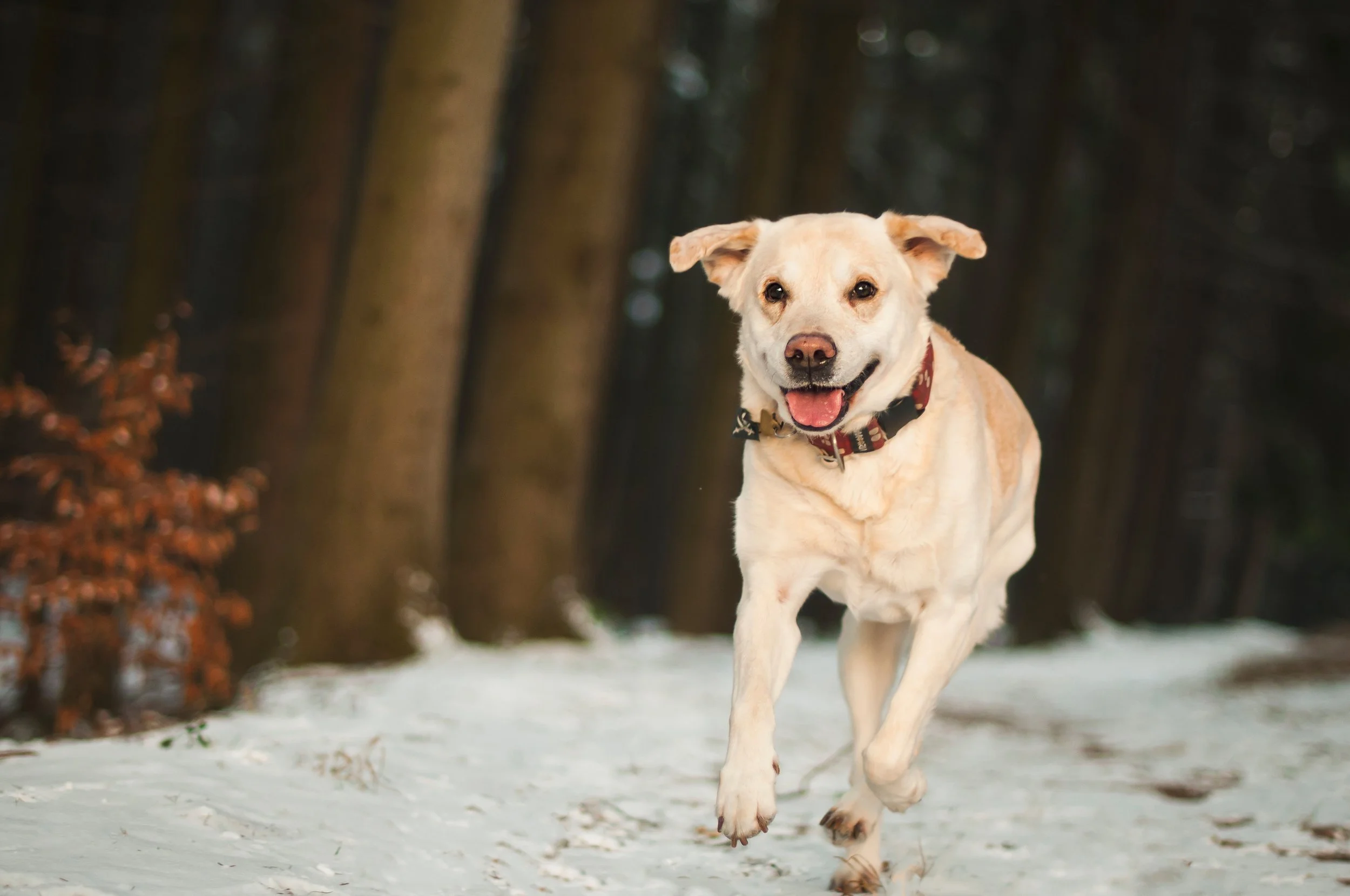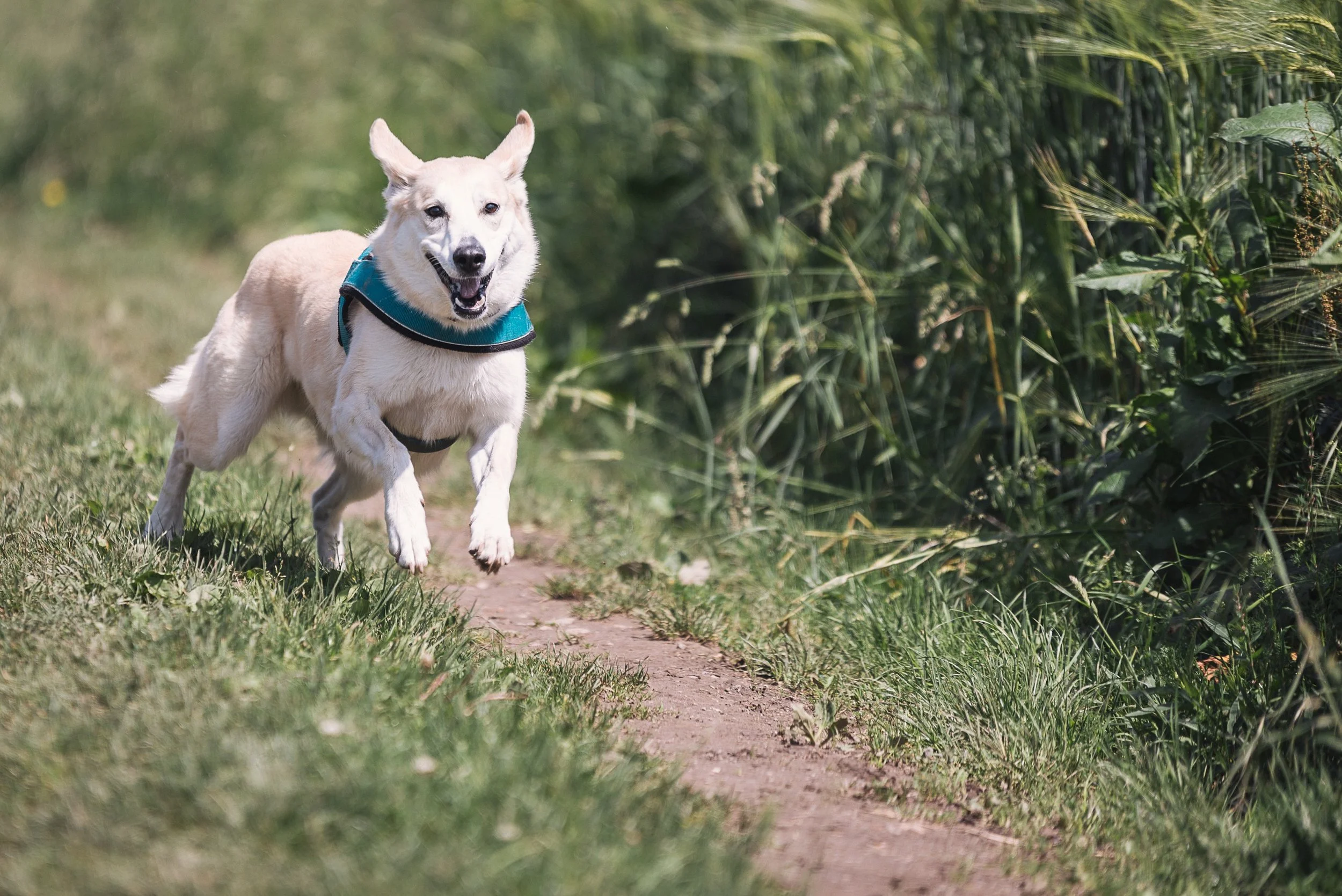Getting Your Dog to Come to You
/A reliable recall is simultaneously one of the most important behaviors to teach your dog, and one that people struggle with the most. Today I'll talk about steps to build a recall skill and discuss some ways it commonly goes wrong and what you can do about it.
Last week I discussed how to build a focus behavior. I usually recommend having focus at least to the point where it's on cue before starting with recall, but you don't have to do it that way. I just find that makes things easier. As with building focus, I'll discuss how to build recall with a luring and a capture method. If you haven't read the article on focus, at least skimming it can make this easier to understand.
Luring
For most behaviors, luring is easier than capture for human students - recall may be the exception to the rule. I'm not aware of a good way to lure a recall without using two people, which is one of many reasons I prefer capture. Occasionally, I have seen a dog with a slow lazy recall increase speed through a luring technique. That can be done with shaping as well, but I won't get into that today. To lure a recall:
- Have one person restrain the dog. Hold them by their collar, harness, or their hips to prevent them from running (if your dog hates this, do not use this method). The person doing the luring shows the dog (to their nose, dogs are not as visual as humans, but man do they love to smell) an amazing treat (or other high-value item the dog really wants, food just tends to be universally motivating). After getting the dog excited over what they have, run away from them.
- Turn and face the dog from a distance after running away. If you've teased them properly, they should be pulling against their restraint. Now is the time to let go. They'll book it to you, and as soon as they get to you: mark and reward.
- When step 2 is reliable and the dog is definitely running to you, add in your cue. Say "come" or "here" or whatever cue you want to give. Your partner doesn't let go of the dog until after the cue is given.
- After practicing step 3 over several days, quiz your dog by giving the cue when they're not expecting it. If they come to you, mark and reward. Congratulations, you're done with acquisition and on to proofing (again, I'll cover proofing in the future - it's coming...). If they do not come when you quiz them, don't worry. Just practice a few more sessions and try another quiz in a day or two. They'll get it eventually.
Capture
In the case of recall, I personally find that capture not only results in better final behavior from the dog, but it's easier. Capture can also be done with only one person. Food is preferable to non-food rewards using this method for reasons that will become obvious. To teach a recall using capture:
- Get a handful of awesome treats. Show one to your dog (at their nose, remember!) and then toss it away from you in a manner that allows the dog to visually follow the treat (I know I said dogs aren't as visual as us, but they will use motion to track something they want to eat and finding it with scent alone can take up a lot of time in this exercise). Don't try to break any world records, aim for about five feet away from you or so.
- Your dog should run off to get the treat. If they don't, you probably threw it in a way that made it hard to track. Practice and you'll both get better. Once they eat the treat, they're very likely to run back to you for more. They might delay, perhaps sniffing around for more, perhaps getting distracted by something else that caught their eye. They will eventually come back to you. When they do, mark ("yes!" "Good boy!" Click, etc) and toss another reward. Unlike with many other behaviors, you toss this treat away from you because you are capturing the dog coming to you. If you just give them a treat, they're already at you and there's nothing to capture. Repeat until you use up your handful.
- Continue step 2 until your dog is coming to you immediately after eating the thrown treat. This takes some dogs longer than others, but it will happen. A typical range is one or two sets for quick dogs, a day or two for slower dogs. If it's taking longer than that, your reward is too low value. Get something better (smellier, tastier).
- Add your cue. Say your word ("here," "come") before your dog naturally returns to you. Since you've waited for an immediate return after eating the treat, this means you are saying the word at about the same time they're eating their treat. It's better to err on the side of being too early than too late.
- As with luring, after a day or two of practicing sets with the cue, quiz your dog by giving the cue when they're not expecting it. If they succeed, begin proofing. If they do not, continue sets for another day or before quizzing them again.
Poisoned Cues
The most common problem with dogs that have a bad recall is that their human has ruined the cue. Many of us start saying "come" to our dog the same day we bring them home. They become desensitized to the word through overuse and lack of consequence. That alone can make it seem like your dog is bad at their recall, but is easily fixed by following either of the above procedures and choosing a new cue that you keep sacred (only say it when you mean it, are willing to pay for it, and are confident the dog will perform). Even worse, some people have accidentally poisoned their cues.
A poisoned cue is one the dog has learned is best to be ignored. It's different from simply being desensitized because they know there is a consequence to the cue you're giving, it just happens to be one they don't want. This is hundred-year-old science: if the consequence is undesirable, the behavior will be avoided. Two examples of this that I've seen are:
Calling the dog from something they really love, and "rewarding" them with something they just sorta like. Once a dog gets past the acquisition phase and has some semblance of understanding a recall cue, some people go way too far way too fast and will call their dog inside from playing in the back yard. Up until this point, the dog has a high rate of reinforcement (RoR) and will happily come running. The human gives their treat, closes the door, and thinks all is well. For some dogs - it might be. For many, they just lost access to the funhouse known as the back yard. They lost the ability to chase squirrels, bark at birds, sniff trees, roll in the grass, poop and pee at will, and all they got in return was a measly little morsel? How unfair! If this happens enough, the dog may learn that it's not a good idea to come running when you cay "come" because the consequence is losing out on a lot of great stuff. This is accidental negative punishment.
Calling the dog and giving them something we think they'll like but they really kinda hate. Similar to above, but earlier in the practice stages, some people try to abandon treats all together. They'll call their dog and reward them with a "good boy" and a pat on the head. There are a few dogs that find this reinforcing enough to maintain the behavior. Got one? Great, you're lucky. For the rest of us, at the minimum you're teaching them that recall doesn't result in a very high payment and might not always be worth it. For a few unlucky souls in this position, their dog secretly hates being touched on the head. They tolerate it because their human seems to like it and dogs are pretty awesome in how much they'll put up with from us (don't believe me? Try to pet a tiger against its will **legal disclaimer: don't actually do that**). In this case the dog learns over time that they really don't want to come to you because they don't like the outcome - again, punishment for the behavior (punishment is in the eye of the beholder). This is accidental positive punishment.
Those are two common examples that I've seen more times than I can count. Rarely you see a dog that has had a cue poisoned because their human was scared or angry and gave the recall cue in an accidentally (or even intentionally!) threatening way. "Come over here or else!" doesn't seem very appealing to me, because I'm pretty sure the "or else" is going to happen when I get there anyway. Dogs are no different. I'm safe and happy over here, so I'll just stay over here thank you very much.
The best thing to do is avoid poisoning your cues in the first place, but if it's too late for that - start over following the steps outlined above with a different cue. Keep in mind you may have to re-establish some trust that your dog really is going to like this. You may have to use an extremely valuable treat. You may spend more time in the early stages (before adding the cue) than someone starting fresh might. That's okay. You're working from a more difficult starting place. Keep at it, and get help if you're not seeing progress or getting overly frustrated.
Next week I'll cover the concept of proofing behaviors, so you'll know what to do with your newly acquired focus and recall abilities.
Benjamin is the owner of Good Doggy Saratoga. You can follow him on Facebook.
If you liked this article, please like and share below. You can also subscribe to receive blog updates in your email.






